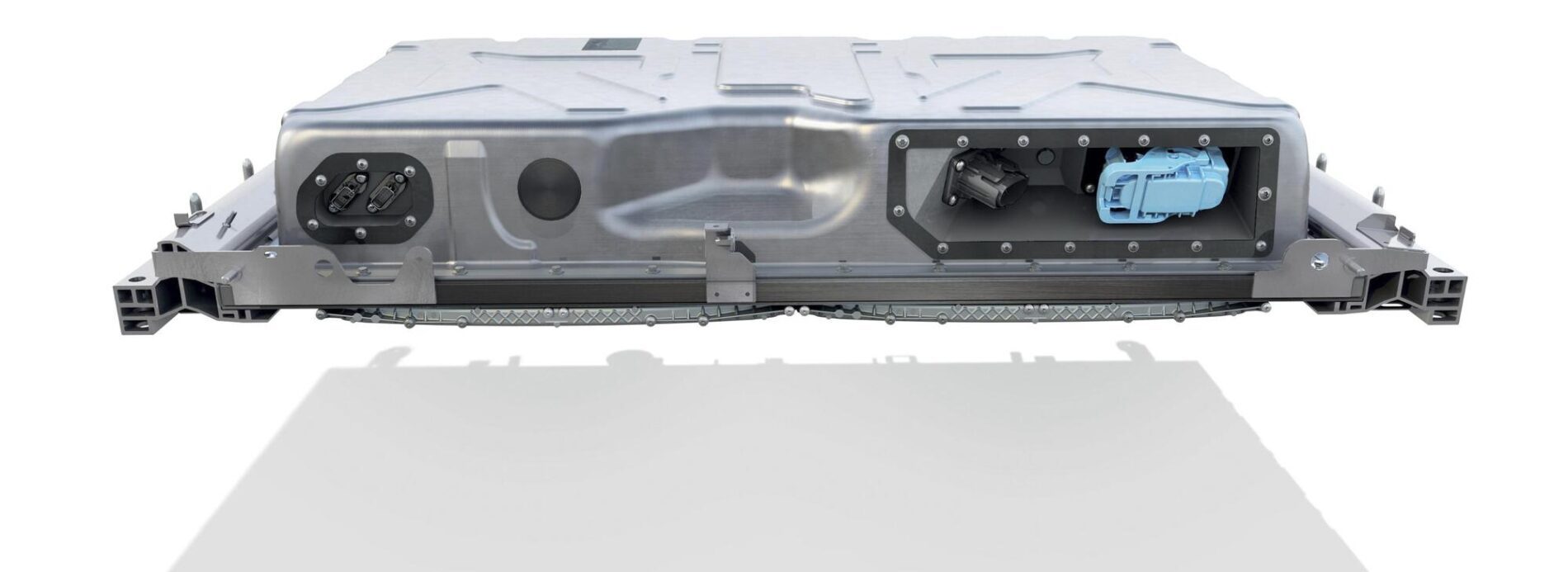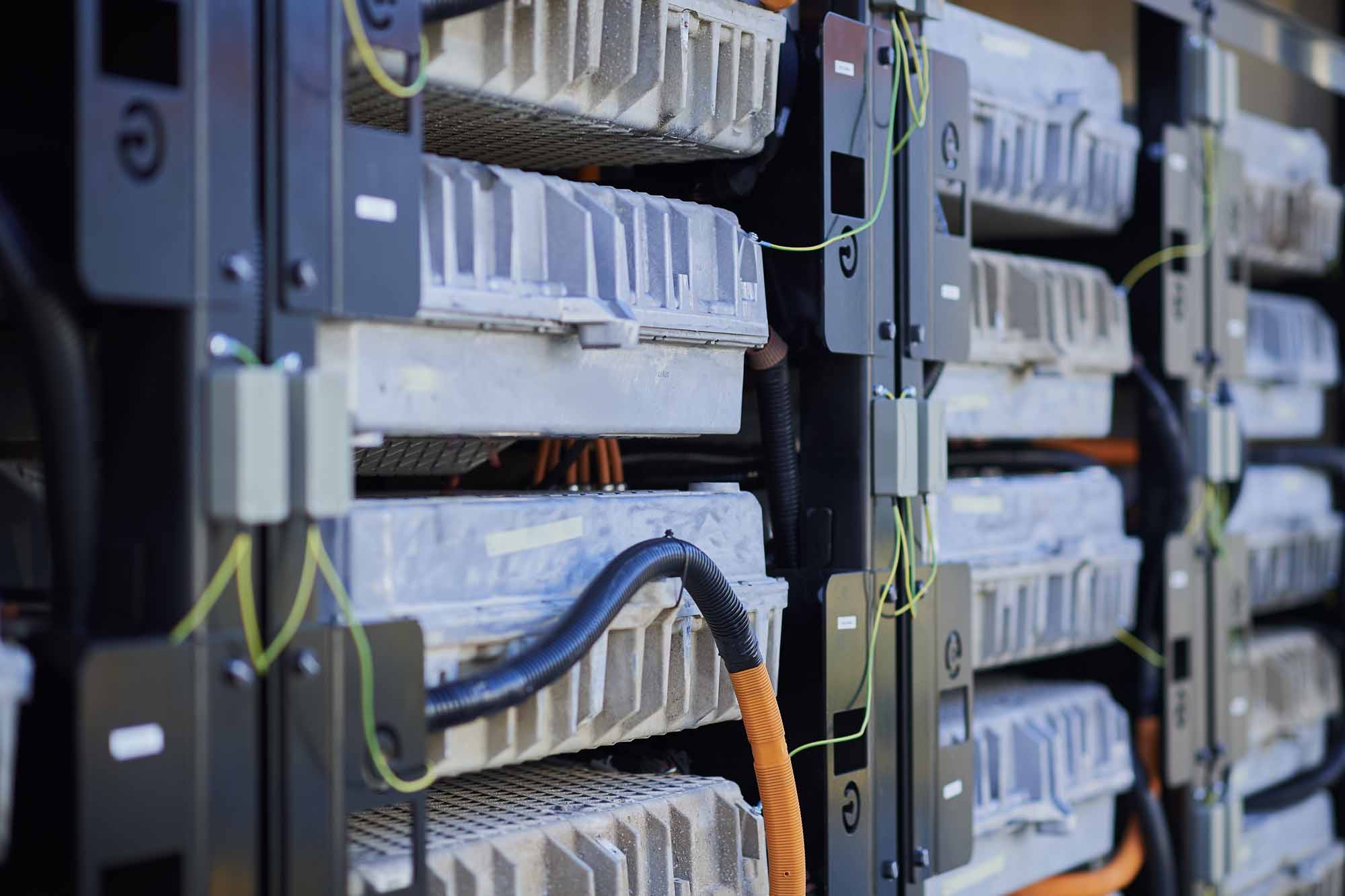What are the different types of electric car battery?
The first electric cars were equipped with heavy lead-acid batteries whose capacity was limited. In the 90s, these were then replaced by nickel-cadmium accumulators with more storage density. But these “Ni-Cd” batteries suffered from memory effect which saw their charging capacity decline over time. Due to the toxicity of cadmium, they are now prohibited. For a time they were replaced by “Ni-MH” nickel-metal hydride batteries, but today all electric cars use lithium-ion technology.
The lithium-ion battery
Invented in the early 1990s, lithium-ion technology rapidly established itself in the world of consumer electronics, and then in the automotive industry. It offers high energy density, very good durability and doesn’t suffer from the memory effect. However, lithium-ion batteries for electric vehicle need to be encased in a sturdy box and monitored by state-of-the-art electronics to prevent overheating or runaway. This is the type of accumulator we find in Renault’s hybrid and electric vehicles.
The solid-state battery
A very promising technology! By replacing the liquid electrolyte, the solid battery becomes more compact and better withstands heat. The solid-state battery therefore offers greater capacity at equal volume, all while also accepting rapid charges. The first mass-market applications, however, are not expected before 2025.
The evolution of electric car batteries
Battery technology has advanced very quickly. As an example, Renault’s ZOE Z.E. 50 uses a battery with the same dimensions as the first ZOE, but whose capacity has grown from 22 to 52 kWh — in other words more than double! Such progress results in an ever-increasing range, now reaching up to 395 kilometers on the WLTP* cycle.
What is a battery made from?
An electric car lithium-ion battery consists of several cells connected to one another, a battery management system (or “BMS”) and a cooling circuit (using air or liquid), all encased within a reinforced waterproof box. The Renault ZOE battery contains no less than 192 cells, for a total capacity of 52 kilowatt hours.
How does the battery work in an electric car?
Each cell of a battery contains two electrodes immersed in a conductive liquid — the electrolyte. When recharging the electric car’s battery, the charger transfers electrons from the positive electrode (anode) to the negative electrode (cathode). Conversely, when the car is in motion, the electric vehicle motor uses the current generated by the flow of electrons leaving the cathode to return to the anode.
Recharging batteries
Whether at home or the office, on the street or the highway, there are many ways to charge your electric vehicle. There are currently more than 200,000 public charging stations in Europe: with 33,000 in Germany, nearly 30,000 in France and almost 25,000 in the United Kingdom. Between 10-15% of these stations offer rapid charging at a high-power output. Then you need to factor in all the stations available in private spaces (at home, work etc.)
How long does it take to charge an electric car?
The electric car charging time is like filling up a water bottle from the faucet: the bigger the bottle or weaker the flow, the longer it takes. At the same charging power, a “big” battery will take longer to charge than a smaller one. And, at the same capacity, it is the power output from the charging station that makes the difference. For example, recovering the equivalent of 100 kilometers of range on a Renault ZOE takes 7.5 hours on a domestic outlet, but just 45 minutes on a public terminal at 22 kilowatts, and only 21 minutes on a 50 kilowatt DC rapid charging station!
Also, one of Renault ZOE’s strengths (since the 2019 model) is its patented Caméléon® charger which supports both direct current (DC) rapid charging at 50 kilowatts and also alternating current (AC) fast charging of up to 22 kilowatts — a power output often found on street-side public charging stations but from which many electric vehicles can’t fully benefit. Thanks to the versatility of its charger, Renault ZOE can get the most power from the connectors and stations most commonly found in both public and private spaces: at home, work, store car park, around the city, on the highway, etc.
What is the lifespan of an electric car battery?
With use and full-to-empty charging cycles, the battery of an electric car eventually wears out, losing its energy capacity. However, this decline is very slow, and it is estimated that an electric vehicle retains on average 75% of its capacity after ten years. In fact, the battery of an electric car is designed to last as long as the vehicle itself.
How much does an electric car battery cost?
To this day, lithium-ion batteries remain an expensive part of the electric vehicle. For example, the battery of a Renault ZOE (with a capacity of 52 kilowatt hours) costs around 8000 euros, depending on the country. However, thanks to technological advances, the cost of electric car batteries keeps falling.
Recycling batteries
An electric car battery contains many valuable materials: lithium, cobalt, nickel, aluminum, etc. But while the channels for recycling these materials already exist, they involve complex and expensive operations that require chemical transformations. It is therefore better to start by finding new, less demanding uses for batteries, and thereby offer them a second life. This is one of the missions of MOBILIZE, which offers innovative energy storage solutions.
Batteries for stationary energy storage
One of the solutions for reusing electric vehicle batteries is as stationary energy storage systems. They can be used to store the electricity produced by wind turbines and photovoltaic panels in order to ensure constant supply when there is no wind or no sun. Such installations can be rolled out for a single house, a building, a factory or even a whole neighborhood. In this way, stationary battery storage could become part of everyday electricity supply.
What is the guarantee for an electric car battery?
For the full purchase of a Renault ZOE, the battery included with the car is then guaranteed for 8 years or 160,000 kilometers, whichever comes first.
Preserving the battery of your electric car in winter
In cold weather, the battery of an electric car becomes less efficient. At the same time, it is under particular strain during this period due to the use of interior heating. So, to maximize the battery’s range in winter, there are a few rules to follow. Firstly, use the pre-conditioning feature when the car is plugged in so that you can heat the interior without drawing from the battery. Secondly, use the “Eco” mode to optimize energy consumption through the intelligent regulation of accelerations, heating and braking. Lastly, adopt eco-driving behavior so as to recover the most energy possible and avoid sudden braking, which uses up a lot of energy. With these techniques, your electric car’s range is optimized.
*WLTP: Worldwide Harmonized Light Vehicles Test Procedure, standardized cycle: 57% urban driving, 25% suburban driving, 18% highway driving.
Copyright : Pagecran



